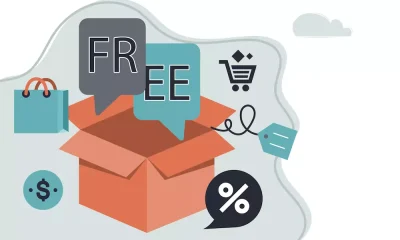Marketing
Webcasts And Webinars – What’s All The Fuss About?

We all love a good webinar, but do we feel the same about webcasts? Let’s find out.
Do you know the difference between webinars and webcasts? While renowned marketing expert Neil Patel says webcasts and webinars are often used interchangeably for the same online event – they are not the same.
Webcasts are more like watching TV as they are live events, live TED Talks streamed to large audiences. In contrast, webinars are usually attended by less than 1000 people, are interactive, and can be organized and dashed.
This article examines the similarities and differences between webcasts and webinars and when your business would use them.
Webcasts Versus Webinars
Webinars are the online version of an in-person seminar. If you’ve attended or hosted a meeting, you’ll know there is much interaction with the audience. The seminar’s course is often driven by audience participation and what they seek from the workshop. On a webinar, it is the same collaboration between the host and the webinar attendees.
Similarly, a webcast is an online broadcast, usually of a live event.
Good examples of webcasts include TED talks which are live-streamed and also recorded. Online media also love webcasts to record in their studio and post on their site for continuous viewing.
A webcast is, you could say, more future-proof than a webinar insofar as the former can be shown live or in pre-recorded form and can be repurposed later as re-watchable video content, such as on YouTube.
A webinar, however, tends to focus on time-sensitive issues that are important to tackle in the here and now.
For example, an event like COVID and its impact on local businesses may inspire a business association to host a webinar on how to continue trading during the lockdown.
The audience participants will be local business owners and business owners in the wider community, should they believe the content will be relevant.
On the webinar, attendees will interact with the hosts through online chat, Q&A sessions and polls.
Use Online Video
Any type of online video is suitable for marketing. Remember, webcasts and webinars are recorded.
If your business is trying to decide whether to hold a webcast or webinar, a good starting point could be defining the audience you want your event to attract.
Generally, webcasts are geared towards larger audiences, while webinars are often aimed at a smaller, more specialist crowd.
How small? TechFunnel says only a few hundred people at the most. For example, you’re an accounting firm, and there’s been a recent change to the business tax rate. Your small group of clients will want to know how the change will impact their business.
Webinars will allow your clients to participate, and those who could not attend the live webinar can view its recording later. Businesses can remove their webinar recordings as and when they are no longer relevant to their intended audience.
Meanwhile, a webcast can draw a significantly higher number of attendees – usually up to thousands of people per event, like the TEDTalks. Plus, they tend to remain online longer than recorded webinars.
Webcasts and Webinars To Grow A Community
Webcasts and webinars can help grow a business community – good for brand recognition and marketing. Some of the positive outcomes from webcasts and webinars include:
- Engagement
- Thought leadership
- Brand awareness
- Networking opportunities
- Feedback
Webinars are more personal and can be used for customer acquisition.
Webcasts and webinars allow for real-time interaction, such as live chats and Q&A sessions, enabling businesses to engage directly with their audience. This fosters a sense of community and creates a discussion and knowledge-sharing platform.
By providing valuable content and insights, businesses can position themselves as industry leaders and trusted sources of information. This attracts like-minded individuals and encourages them to become part of the community.
Webcasts bring people together, enabling attendees to connect with each other and expand their professional networks. This facilitates the growth of a community around the business and encourages collaboration and partnerships.
Hosting webcasts helps to raise brand awareness and visibility. As more people attend the webcasts and share their experiences, the community around the business expands, reaching a wider audience.
Webcasts provide an opportunity to nurture relationships with existing customers or clients. By offering valuable insights and support, businesses can strengthen loyalty and create brand advocates within the community.
Both webinars and webcasts allow businesses to gather feedback and insights from the community, helping them improve their products or services based on customer needs. This iterative process further strengthens the community and fosters a sense of collaboration.
Webcast and Webinar Platforms
With the similarities of webcasts and webinars, the technology to record them is the most the same. This has enabled providers to provide businesses with webinars and webcasts production, recording and hosting. For example, ON24 offers a webcast platform for webinars, too. This is a good option, especially when your business lacks webcasts and webinars.
However, like with so many software platforms, always do your research, including reviewing customer reviews.
Summing Up
Webinars and webcasts take the traditional offline marketing strategy of in-person seminars online. They also enable small businesses to invite experts living offshore to participate online for a fraction of the business’s cost for attending an in-person workshop or event.
Finally, as a general rule, choose a webinar the topic is specific to a niche demographic like your existing customers and a webcast for sharing more generalistic information that’s appropriate for a broader audience.









